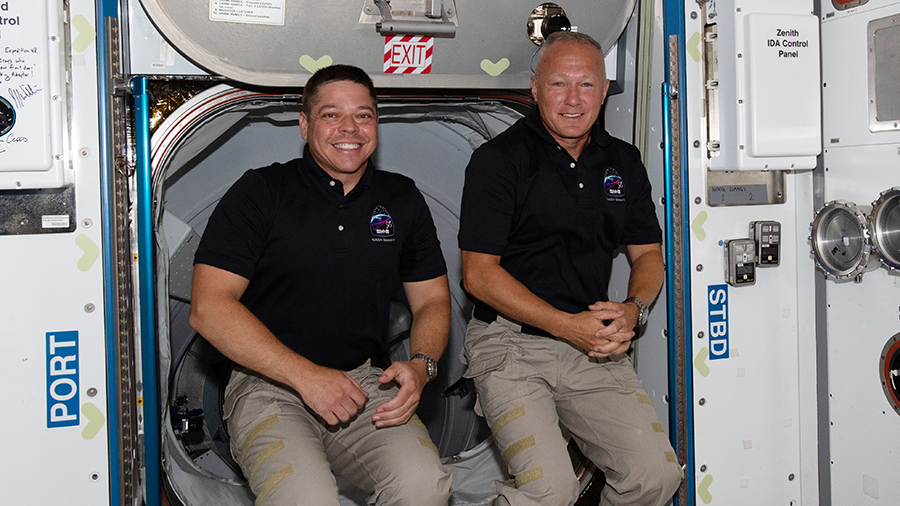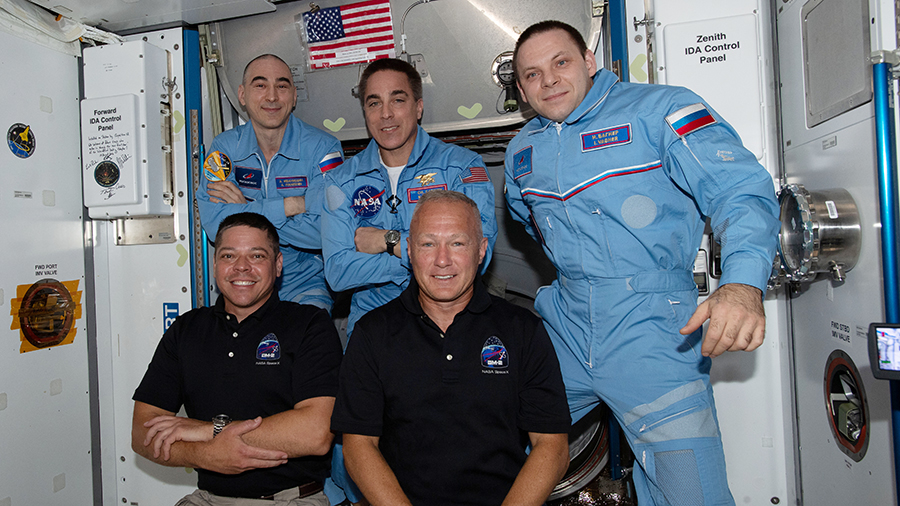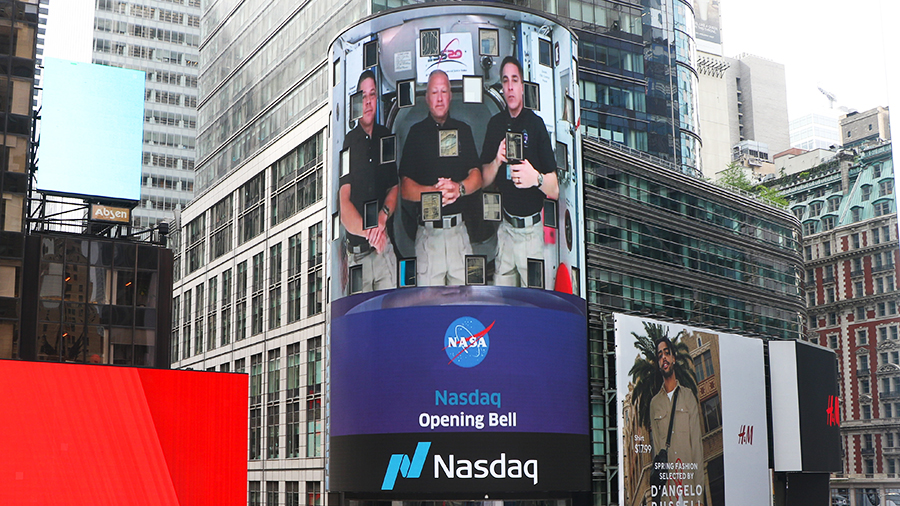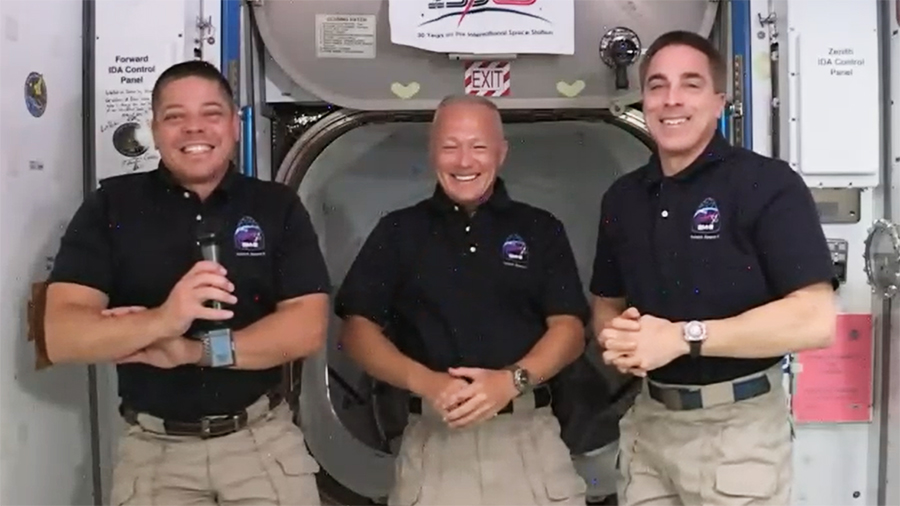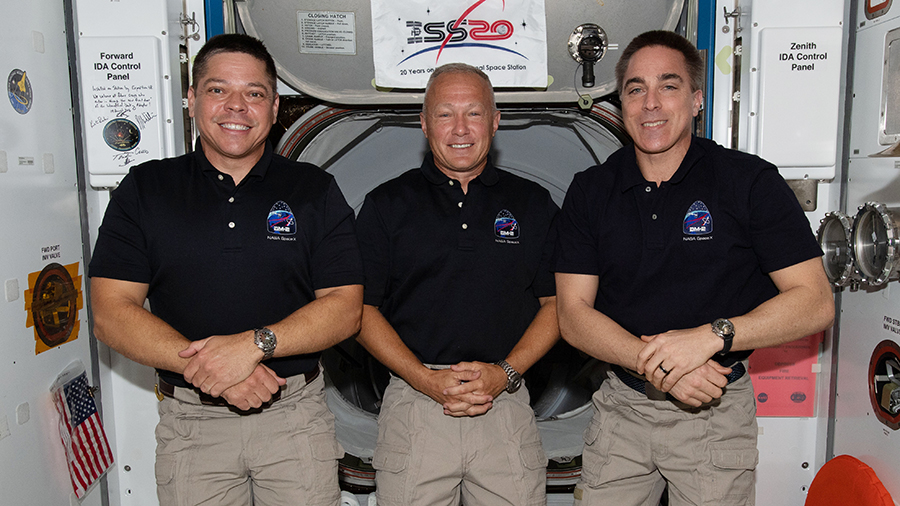
The Expedition 63 crew and its two newest crewmates aboard the International Space Station wrapped up the workweek studying a wide range of space phenomena.
Commander Chris Cassidy began Friday setting up optical communications gear aboard the Japanese Kibo laboratory module. The new broadband hardware will demonstrate transmitting large amounts of data back and forth from the station to the ground. Afterward, the NASA astronaut swapped out test samples for an experiment taking place inside the Materials Science Laboratory.
New station Flight Engineers Doug Hurley and Bob Behnken are still in a handover period as they wrap up their first work week in space. The astronauts familiarized themselves today with medical kits, the food pantry, communication systems and safety procedures. They also continued researching space bubbles in microfluids and unpacked Japan’s HTV-9 resupply ship, which arrived six days before they did.
Roscosmos Flight Engineers Anatoly Ivanishin and Ivan Vagner kept up this week’s research as they photographed natural and man-made impacts on Earth and monitored the station’s radiation environment. The duo also continued inspecting the orbiting lab’s Russian modules while videotaping their station activities for Earth audiences.

